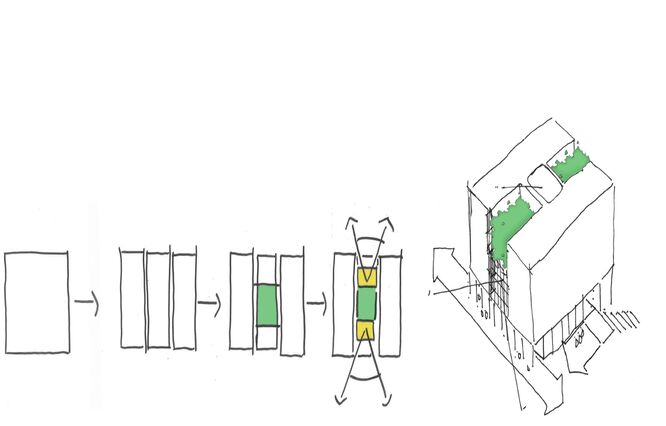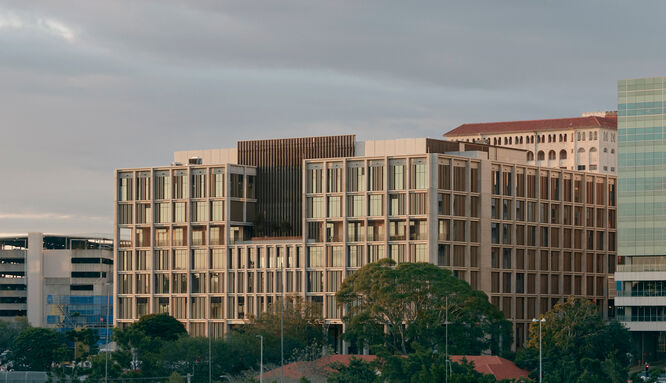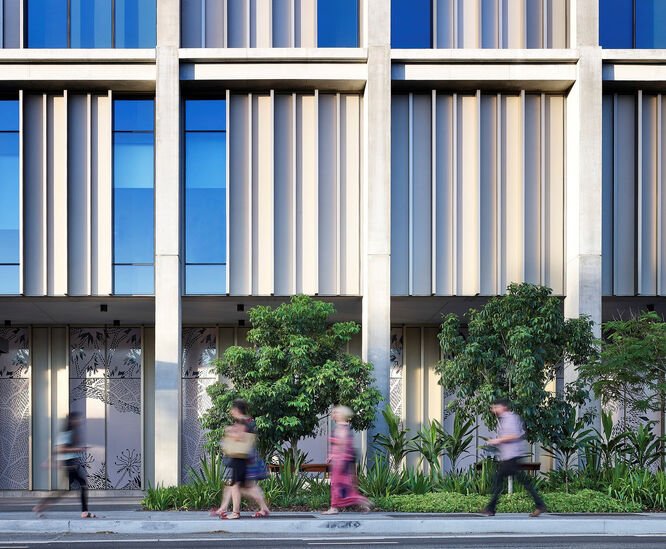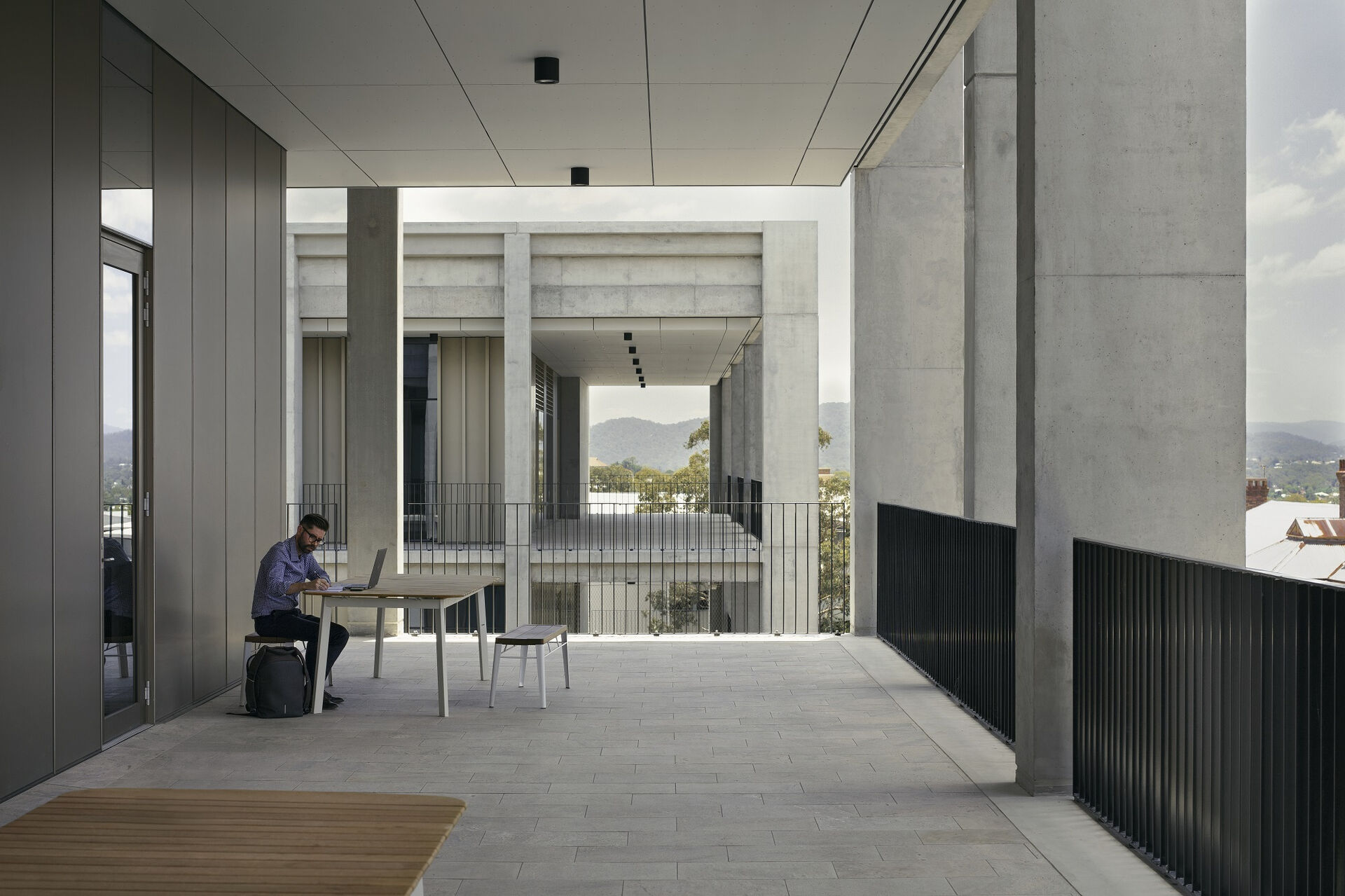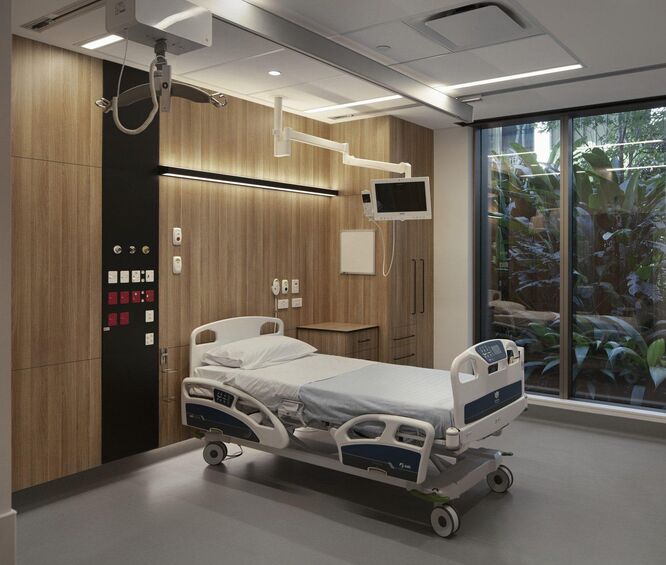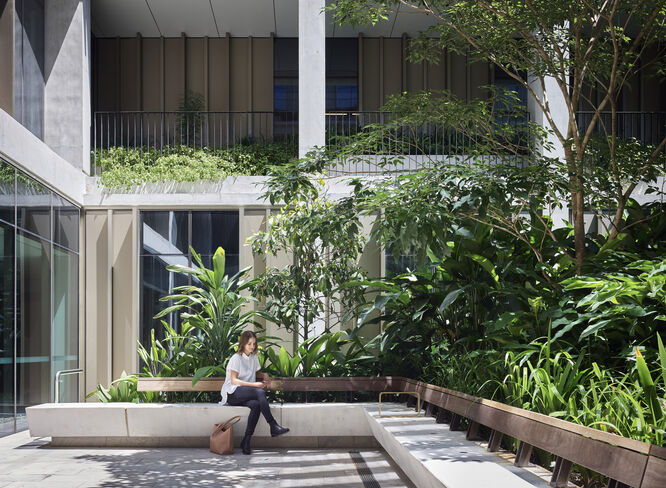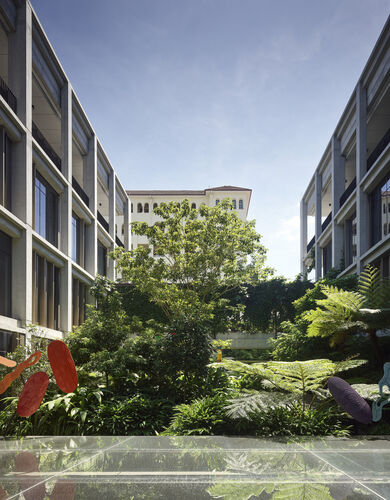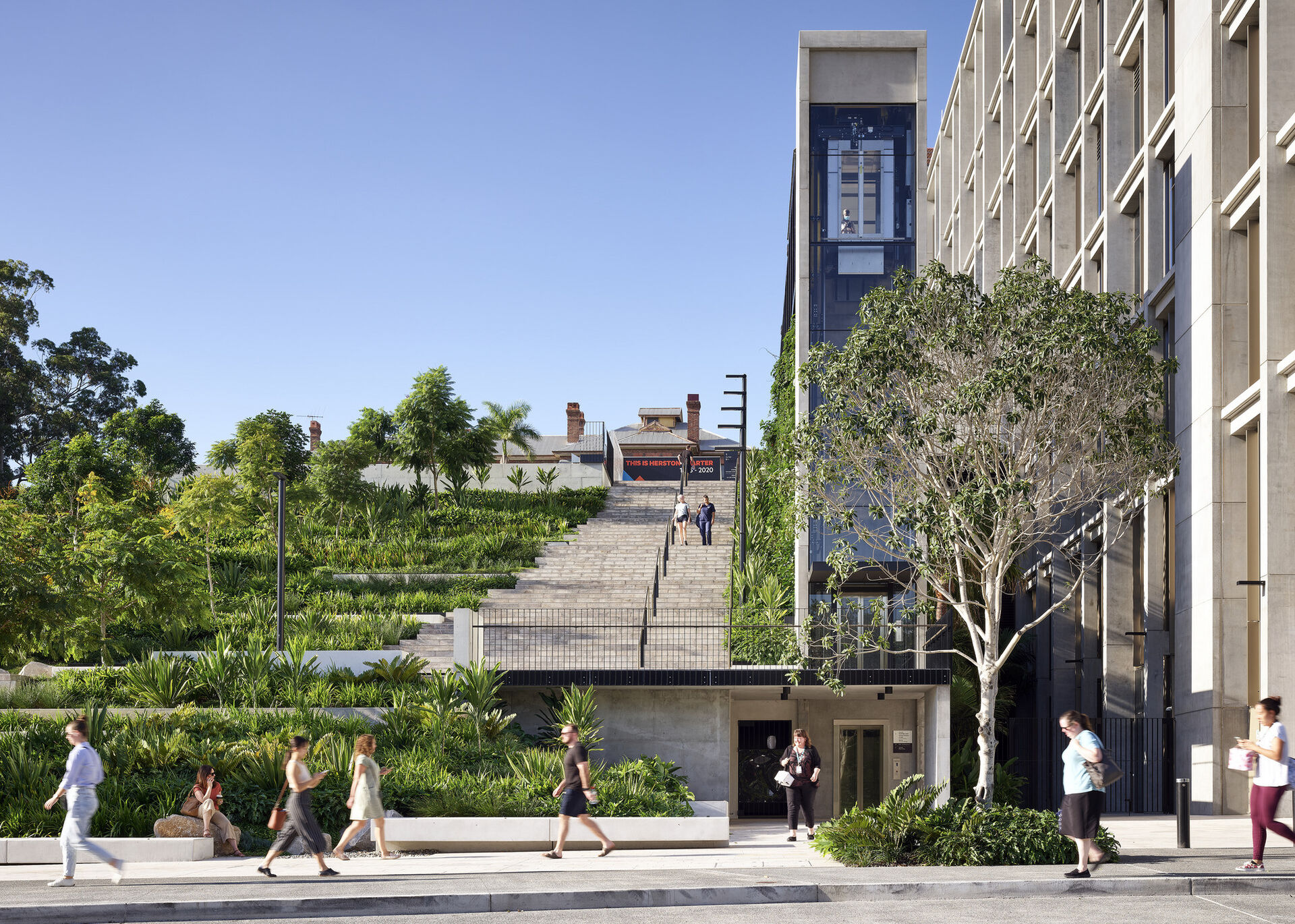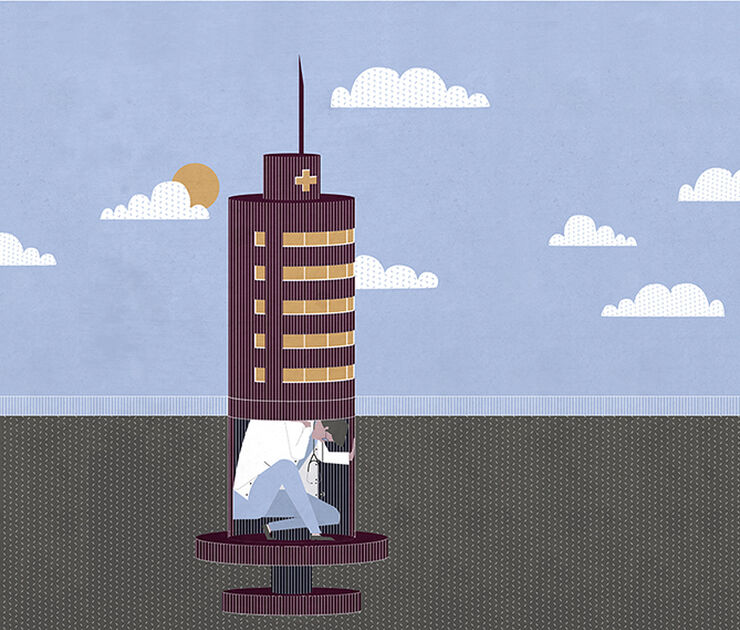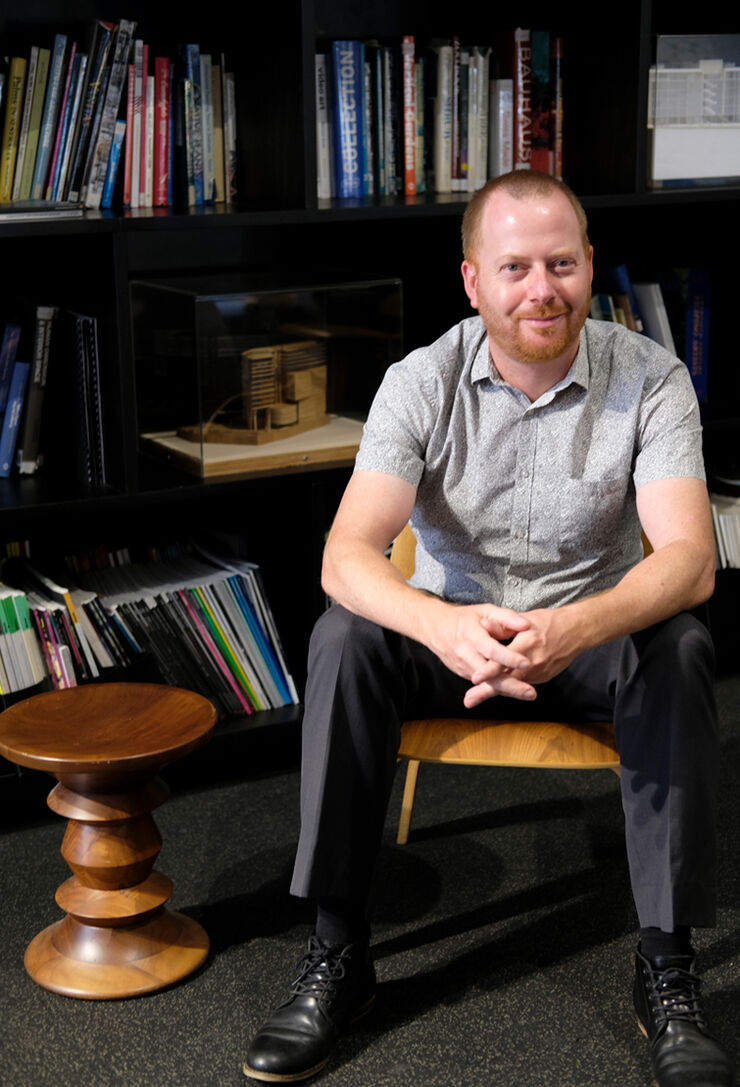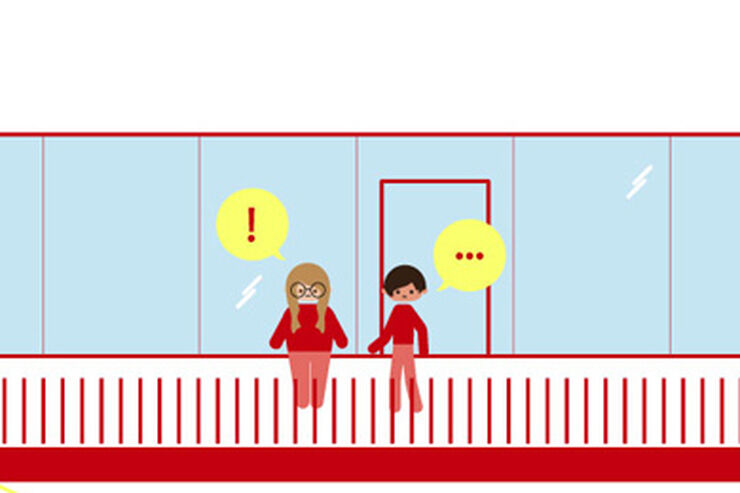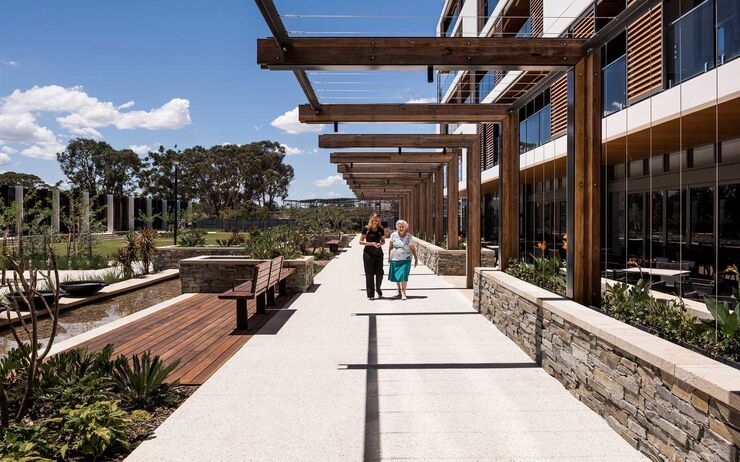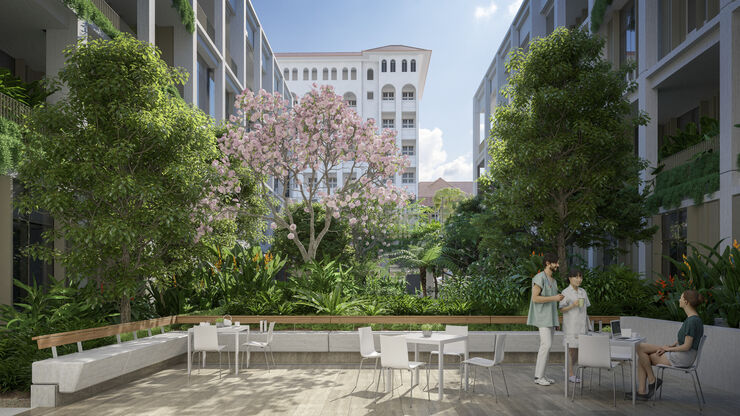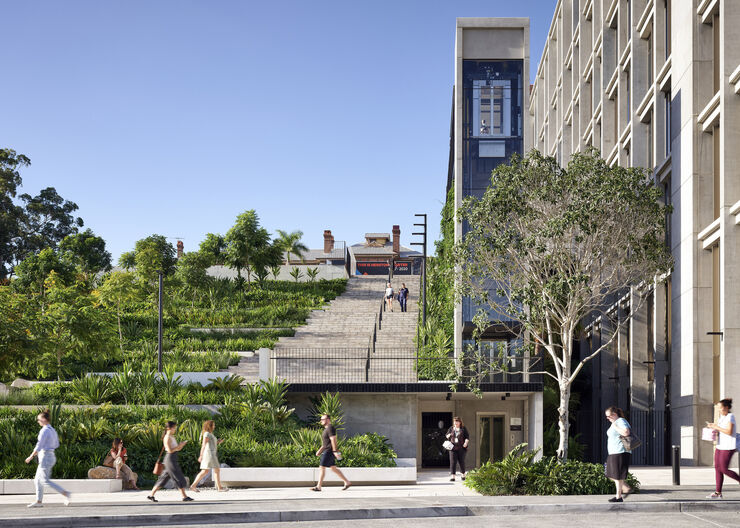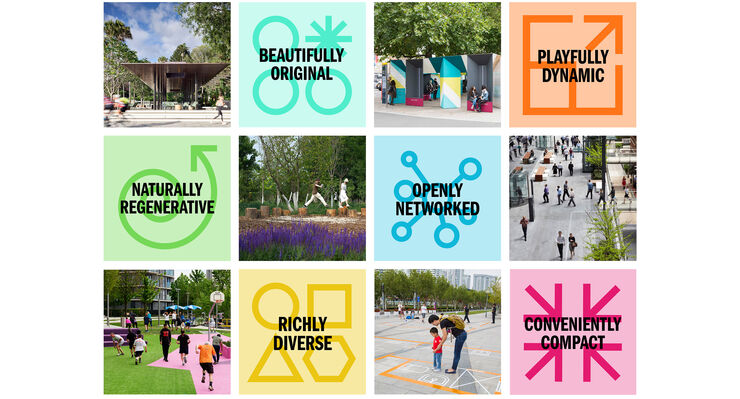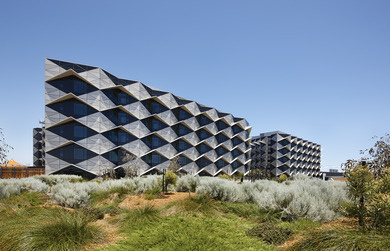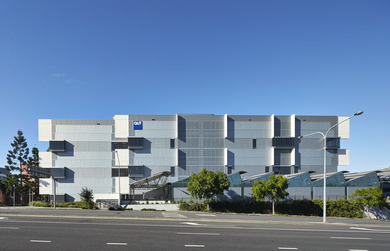Highlights
The patient journey underpins the planning for the nine-story, 182-bed hospital. Key interaction areas mark important points throughout the building and assist orientation. High traffic areas like outpatient clinics and the day surgery are located on the building’s lower levels, as well as specialist biomedical engineering services to customise mobility aides to give recovering patients greater independence.
Meanwhile, inpatient areas are on higher floors that have direct access to the landscaped outdoor decks. The surgical floor features seven operating suites and three endoscopy procedure rooms for elective surgery and shorter inpatient stays.
Therapy gyms and recovery areas – the spaces where people spend more time – are integrated with the 100 rehabilitation beds and positioned along the Herston Road façade to maximise views and light and support patients through their rehabilitation.
Commissioned artworks incorporated within the design acknowledge the proven power of art to encourage recovery within healing environments.
Process
To ensure STARS really did become a person-centred model of care within an integrated precinct, we held over 250 user consultation meetings with everyone from consumers, clinical, allied health and support services to academics, engineering teams and facility and construction management.
STARS is a working model that challenges and influences how we think about hospitals and what we should expect from health campuses.
Awards
- 2023 Australian Institute of Architects National Awards, Herston Quarter Redevelopment Stages 1 and 2 won the National Award for Urban Design
- 2023 Australian Institute of Architects Queensland Chapter Awards, Herston Quarter Redevelopment Stages 1 and 2 won the Queensland AIA Karl Langer Award for Urban Design
- 2022 Property Council of Australia National Innovation and Excellence Awards – Best Public Building
- 2022 Queensland Government Minister’s Award for Urban Design: Commendation
- 2021 AILA QLD Landscape Architecture Awards – Landscape Architecture Award for Health and Education Landscape
- 2021 AILA National Award of Excellence for Health and Education Landscape
“The urban strategies developed for the Herston Quarter successfully navigate an existing site with steep terrain and heritage overlay. The approach reorganises the precinct, revitalising existing heritage buildings, accommodating new buildings, and establishing future sites through the removal of redundant building stock.
“A clever insight to remake the terrain has created a new open space with reorganised access to the adjacent heritage buildings. A green court becomes a new civic address at the site’s highest point. Large public steps, a glazed lift, and a bridge signal and manage equitable north – south connections along the steepest and most difficult terrain.
“The topographical reconfiguration establishes accessible plateaus for future building sites and connection to a new east – west colonnade along a contour that connects it to the greater hospital beyond.
“The edges are activated, permeable, and transparent; open spaces are green, and the landscape is lush and cooling; and park and city views are defended and retained. The finishes are robust and high quality and heritage aspects are visible and respected. Herston Quarter connects to the immediate and broader city through its proximity to adjacent transport networks, bringing amenity to its users and the public.
“This forthright urban design on a difficult site supplies opportunities for new accommodation and commercial usage that encourage activation and public access, clearly establishing the Quarter’s new future as more than a health precinct.”
— 2023 AIA QLD Awards Jury

